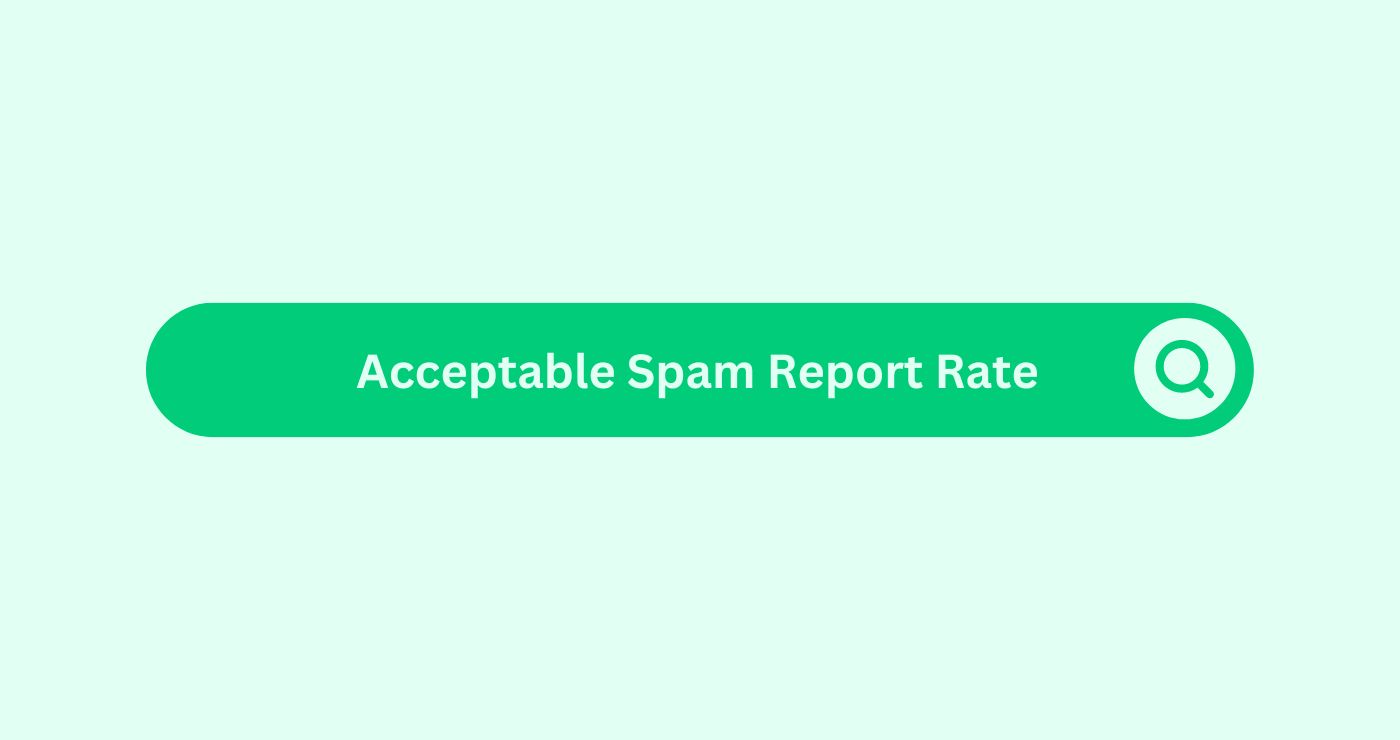Definition
The acceptable spam report rate measures the percentage of recipients who mark an email as spam in email marketingDefinition Email marketing utilises emails to promote produc.... This rate directly affects the sender’s reputation and the deliverability of future emails. Email service providers (ESPs) monitor spam report rates to ensure users do not receive unwanted or irrelevant emails. A high spam report rate can result in emails being sent to spam folders or, in severe cases, the sender’s accountDefinition In SEO, an Account refers to systematically manag... being suspended. Generally, an acceptable spam report rate is below 0.1% (1 spam report per 1,000 emails sent). Staying within this range helps maintain a good sender reputationDefinition Sender Reputation in Email Marketing is a score t... and ensures emails reach the intended recipients’ inboxes.
How You Can Use
Example
Consider an e-commerce business that sends out a weekly newsletterDefinition A newsletter in email marketing is a regularly di... to 10,000 subscribersDefinition In the context of SEO, subscribers refer to indiv.... If 20 recipients mark the email as spam, the spam report rate would be calculated as follows:
Spam Report Rate Calculation:
Spam Report Rate = (Number of Spam Reports / Number of Emails Sent)×100
Report Rate = (Number of Emails Sent / Number of Spam Reports)×100
Spam Report Rate=(2010,000)×100=0.2%
Spam Report Rate=(10,00020)×100=0.2%
In this example, the spam report rate of 0.2% exceeds the acceptable threshold of 0.1%. This indicates a potential issue with the email content or list quality, prompting the business to review and improve its email strategy. They might consider segmenting their email listDefinition By forwarding the email, you ensure that your tea... more effectively, personalizing content, or ensuring that subscribersDefinition In the context of SEO, subscribers refer to indiv... have explicitly opted in to receive emails.
Formulas for Calculating
To keep track of your spam report rate, you can use the following formula:
- Spam Report Rate:
Spam Report Rate = (Number of Spam Reports / Number of Emails Sent)×100
Spam Report Rate = (Number of Emails Sent / Number of Spam Reports)×100 - Acceptable threshold calculation:
To determine if your spam report rate is within the acceptable threshold:
Acceptable = Spam Report Rate.
By consistently monitoring these metricsWhat are Metrics in the context of SEO? Metrics in SEO refer..., you can ensure your spam report rate remains within acceptable limits and take corrective actions if necessary.
Key Takeaways
- Monitor Regularly: Keep a close eye on your spam report rate to maintain a healthy sender reputationDefinition Sender Reputation in Email Marketing is a score t....
- Segmentation: Segment your email listDefinition By forwarding the email, you ensure that your tea... to send more relevant content to subscribersDefinition In the context of SEO, subscribers refer to indiv..., reducing the likelihood of spam reports.
- Opt-In Confirmation: Ensure all subscribersDefinition In the context of SEO, subscribers refer to indiv... have explicitly opted in to receive your emails, minimizing unwanted emails.
- Content Quality: Focus on providing valuable, engaging content that aligns with subscribers’ interests to prevent spam reports.
- Feedback LoopDefinition A Loop in Social Media Marketing refers to a stra...: Use feedback loops provided by ESPs to understand why recipients mark emails as spam and address these issues.
FAQs
What is the acceptable spam report rate in email marketing?
The acceptable spam report rate is generally below 0.1%, meaning fewer than 1 spam report per 1,000 emails sent.
Why is the acceptable spam report rate important?
It helps maintain a good sender reputationDefinition Sender Reputation in Email Marketing is a score t..., ensuring that your emails reach the recipients' inboxes rather than being marked as spam.
What happens if my spam report rate exceeds the acceptable threshold?
A high spam report rate can leadDefinition A Lead in the context of SEO refers to a potentia... to emails being sent to spam folders, reduced deliverability, and potentially, suspension of your email sending accountDefinition In SEO, an Account refers to systematically manag....
How can I reduce my spam report rate?
Focus on list segmentationDefinition In email marketing, list segmentation divides ema..., ensuring opt-in confirmation, providing valuable content, and using feedback loops to improve your email strategy.
How often should I check my spam report rate?
It’s advisable to monitor your spam report rate after every major email campaignDefinition A company sends a coordinated set of individual e... to quickly identify and address any issues.
What causes a high spam report rate?
Common causes include sending irrelevant content, not having explicit opt-ins, and failing to meet subscribers' expectations.
Can personalization help reduce spam report rates?
Yes, personalizing emails to align with subscriber interests can significantly reduce the likelihood of emails being marked as spam.
What role does email content play in spam report rates?
High-quality, relevant content reduces the chances of emails being marked as spam. Poorly targeted or low-value content increases spam reports.
Is there a difference in spam report rates across industries?
Yes, spam report rates can vary by industry. It’s important to benchmark against industry standards and continuously improve.
What tools can help monitor and manage spam report rates?
Email marketingDefinition Email marketing utilises emails to promote produc... platforms and ESPs provide tools and analyticsDefinition In SEO, analytics involves collecting, measuring,... to track spam report rates, enabling you to take corrective actions promptly.




